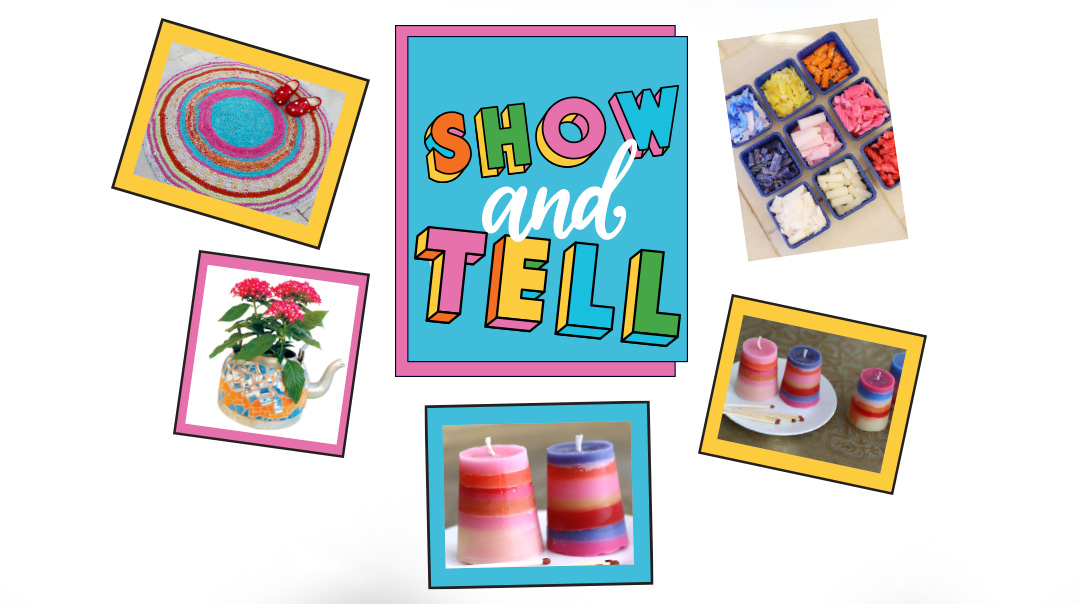Upcycling and Inspiration with Sara Rivka Dahan

"Every little thing that other people see as garbage, I see as a potential craft"

Sara Rikva Dahan lives in Tzfas with her husband and children. She wears many hats as a wife, mother, graphic designer, interior designer, and expert crafter. She runs an unofficial gemach of handmade centerpieces for simchos and community events, cooks up a storm of Moroccan dishes for the groups of yeshivah bachurim they host nearly every Shabbos, and produces graphics and communications for the kollel and chessed organization her husband runs. Mrs. Dahan has a special love for recycling crafts, which she also teaches.
You do so many creative things. How did you get into crafting?
I grew up with parents who weren’t creative but appreciated design and encouraged creativity. In high school, I loved doing needlepoint and embroidery, and I designed t-shirts for our class, but my creativity really took off once I began studying graphic design. After spending hours on the computer, I found a special joy in handcrafting, especially hooked rugs and mosaics.
Once in Israel, I began working as a graphic designer for Mishpacha, and I realized the magazine was lacking a crafts column. I started writing a holiday-oriented column for Family First, which got me thinking about crafts all the time. Due to the dearth of art supplies in Israel then, and my love for resourcefulness (coupled with the fact that there was not yet recycling in Israel), I started focusing on crafts that use items which might otherwise get thrown out.
What's upcycling all about?
I grew up with recycling, so I find it difficult to see so much going into the garbage, especially because this is Eretz HaKodesh. Where does all the garbage go? Every little thing that other people see as garbage, I see as a potential craft. Using these things – boxes, packages, pieces of plastic – for other, creative purposes is called upcycling. I even tear up old bedsheets to make sheet yarn, which I then crochet into washable rugs.
We are generally not consumer-oriented, and recycling crafts help teach us to appreciate what we do have. Truthfully, upcycling is a mindset: instead of throwing everything in the garbage, you start thinking about what you could do with things you already have, which gets those creative gears turning.
The best creativity occurs with the simplest supplies: a few pens, paint, cereal boxes, glue … even the pages of this magazine. There's no limit to what you can do! Life is so much richer when you fill your days with creativity. Give upcycling some thought; you’ll be amazed at how satisfying it is.
Oops! We could not locate your form.


